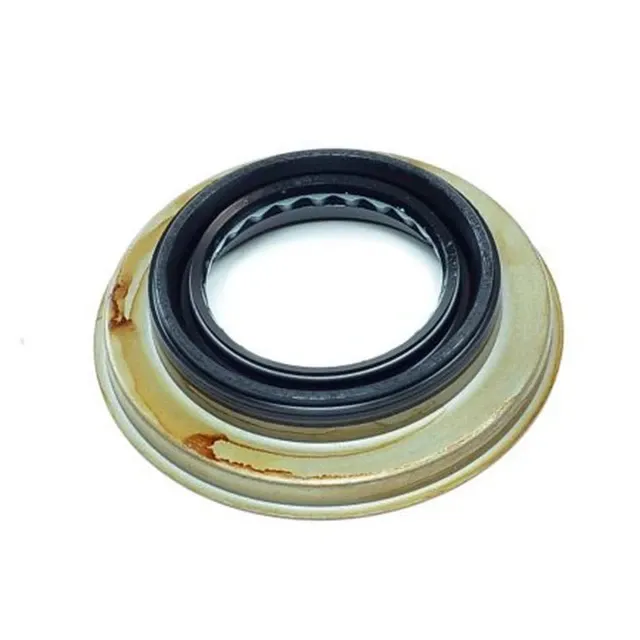Optimizing Efficiency with Bonded Piston Seals for Enhanced Performance and Durability
Understanding Bonded Piston Seals A Comprehensive Overview
In the world of engineering and mechanical design, seals play a crucial role in ensuring efficient operation, preventing leaks, and maintaining pressure in various systems. Among the most advanced sealing technologies is the bonded piston seal, a sophisticated solution tailored for high-performance applications. This article delves into the key features, benefits, and applications of bonded piston seals, highlighting their importance in enhancing the performance of hydraulic and pneumatic systems.
What is a Bonded Piston Seal?
A bonded piston seal is specifically designed to fit within a piston cylinder and effectively withstand the high pressure and dynamic motion associated with piston applications. Unlike traditional seals, bonded piston seals combine different materials, such as elastomers and polymers, to create a sealing solution that maximizes performance and durability. The bonding process ensures that the materials adhere seamlessly, providing both flexibility and strength.
Key Features of Bonded Piston Seals
1. Material Versatility Bonded piston seals can be made from a variety of materials, including polyurethane, Nitrile, PTFE, and others. This versatility allows engineers to select the most suitable material based on the operating conditions—temperature, pressure, and chemical exposure—of their specific application.
2. Enhanced Performance The unique construction of bonded piston seals aids in reducing friction between the piston and cylinder wall. This reduction in friction not only improves the efficiency of the system by minimizing energy loss but also prolongs the lifespan of both the seal and the related components.
3. Leak Prevention One of the most critical functions of a piston seal is to prevent fluid leakage. The bonding of materials enhances the seal's integrity, ensuring that it can maintain a tight fit even under significant pressure changes. This characteristic is especially vital in hydraulic systems where even minor leaks can lead to substantial inefficiency and potential system failure.
4. Low Compression Set Bonded piston seals are designed to have a low compression set, meaning they can return to their original shape after compression. This feature helps maintain a consistent sealing force over time, a crucial factor in dynamic applications where the seal experiences continuous motion.
5. Ease of Installation Bonded piston seals often come in customized designs that can simplify the installation process. Engineers can have seals manufactured to precise specifications, ensuring a proper fit inside the hydraulic or pneumatic system without the need for extensive modifications.
Benefits of Using Bonded Piston Seals
The application of bonded piston seals offers various benefits to manufacturers and end-users alike
bonded piston seal

- Increased Efficiency By reducing friction and preventing leaks, these seals contribute to the overall efficiency of hydraulic and pneumatic systems. Increased efficiency translates to reduced operational costs and improved energy consumption.
- Extended Service Life The durability and resilience of bonded piston seals result in longer service intervals and less frequent replacements. This longevity translates to lower maintenance costs and improved reliability of the equipment.
- Wide Application Range Bonded piston seals are suitable for a wide range of applications, including automotive hydraulics, industrial machinery, aircraft systems, and more. Their adaptability makes them a go-to option for many industries.
- Customizability Engineers can work closely with manufacturers to develop bonded piston seals that meet specific needs, tailoring the design to fit specialized applications or unique working environments.
Applications
Bonded piston seals find applications in various sectors, including
- Automotive Used in brake systems, power steering, and transmission systems, where proper sealing is critical for performance and safety.
- Aerospace Essential for hydraulic systems within aircraft, where reliability and weight reduction are paramount.
- Manufacturing Used in machinery that operates under high pressure and demands low maintenance to ensure continuous production.
- Medical Devices Employed in devices requiring cleanliness and reliability, such as hydraulic pumps in surgical equipment.
Conclusion
Bonded piston seals represent a significant advancement in sealing technology, offering a host of features and benefits tailored to meet the demands of modern engineering applications. By understanding their construction, advantages, and uses, engineers can make informed decisions that enhance the efficiency and reliability of their systems. As technology continues to evolve, bonded piston seals will undoubtedly play an increasingly vital role in the performance of hydraulic and pneumatic applications across various industries.
-
Understanding the Front Main Engine Seal: Purpose, Maintenance, and Installation
News Jul.29,2025
-
Understanding O-Rings and Seal Rings: Types, Applications, and Custom Solutions
News Jul.29,2025
-
Understanding Crankshaft Oil Seals: Rear Seals, Pulley Seals, and Their Role in Engine Integrity
News Jul.29,2025
-
The Importance of Front and Rear Crankshaft Seals in Engine Performance and Oil Management
News Jul.29,2025
-
Crank Oil Seals: Functions, Types, and Cost Considerations in Engine Maintenance
News Jul.29,2025
-
A Comprehensive Guide to O-Rings and Seals: Types, Materials, and Global Applications
News Jul.29,2025
-
Mastering Diesel and Performance Engine Maintenance: A Guide to Critical Oil Gaskets
News Jul.28,2025
Products categories















